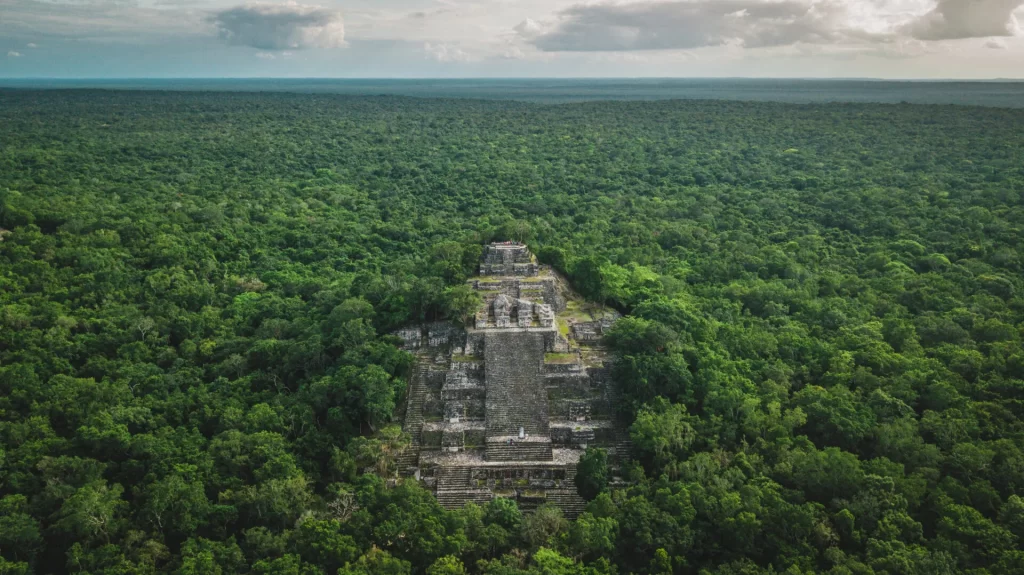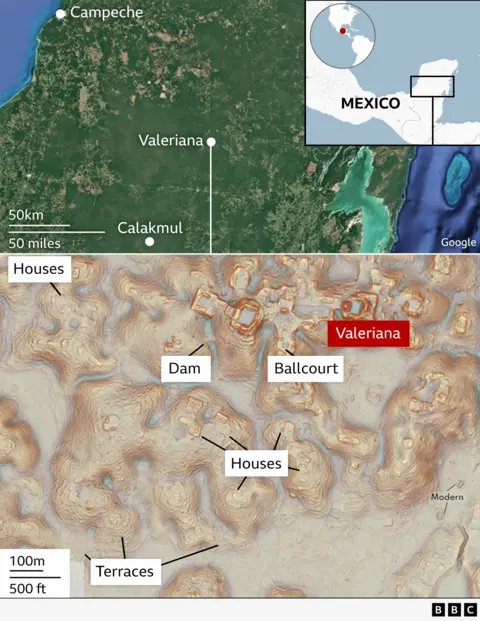A sprawling Maya city, hidden for centuries beneath dense jungle canopy in Mexico’s southeastern state of Campeche, has been accidentally discovered by a PhD student. The ancient complex, dubbed Valeriana after a nearby lagoon, is believed to be second only to Calakmul, the largest known Maya site in ancient Latin America.

Luke Auld-Thomas, a PhD student at Tulane University in the US, stumbled upon the city while browsing data on the internet. “I was on something like page 16 of Google search and found a laser survey done by a Mexican organisation for environmental monitoring,” he explains. The survey, known as Lidar, uses laser pulses fired from a plane to map objects below the vegetation.
Upon processing the data using archaeological methods, Auld-Thomas realized he had uncovered a massive ancient city that may have been home to 30-50,000 people at its peak from 750 to 850 AD. This population exceeds the number of people currently living in the region.
The discovery challenges the Western notion that the Tropics were where “civilisations went to die,” according to Professor Marcello Canuto, a co-author of the research. Instead, he argues, this part of the world was home to rich and complex cultures.
Valeriana, which spans approximately 16.6 sq km (6.4 sq miles), features two major centers with large buildings around 2km (1.2 miles) apart, connected by dense houses and causeways. The city boasts two plazas with temple pyramids, a court for playing an ancient ball game, and evidence of a reservoir, indicating that the Maya used the landscape to support a large population.

Despite its proximity to a major road near Xpujil, where mostly Maya people now live, Valeriana has remained “hidden in plain sight.” No known pictures of the lost city exist because “no-one has ever been there,” although local people may have suspected the presence of ruins under the mounds of earth.
The researchers surveyed three different sites in the jungle, discovering a total of 6,764 buildings of various sizes. Professor Elizabeth Graham from University College London, who was not involved in the research, says the findings support claims that the Maya lived in complex cities or towns, rather than isolated villages.
The research suggests that the dense population of Maya civilizations may have contributed to their collapse from 800 AD onwards, as they were unable to survive climate problems. Warfare and the 16th-century Spanish conquest of the region also played a role in the eradication of Maya city states.

Lidar technology has revolutionized archaeological surveys in vegetated areas like the Tropics, revealing a world of lost civilizations. In the decade since its introduction to the Mesoamerican region, Lidar has mapped around ten times the area that archaeologists managed in about a century of work.
Auld-Thomas believes his work indicates the existence of many undiscovered sites, but the sheer number of new findings means researchers cannot hope to excavate them all. “One of the downsides of discovering lots of new Maya cities in the era of Lidar is that there are more of them than we can ever hope to study,” he adds.
The research, published in the academic journal Antiquity, emphasizes the potential for further groundbreaking discoveries in the region and the importance of preserving and studying these ancient civilizations.



